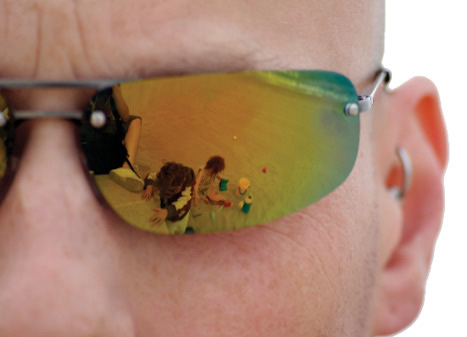Stranger danger?
10 smart strategies to help keep your child safe

By Christa Melnyk Hines
Chances are your child may, at some point, need to seek help from a stranger. But, who should your child approach for help and how much information should your child give? And what about those individuals who your family only "sort-of" know? Although abduction by strangers is statistically rare, the media sensationalism of such events makes the ordeal seem all the more likely.
Define "stranger." Beth Wegner, a community crime prevention specialist, tells children that "strangers can be nice. They may have toys or pets, but strangers are people you do not know." In general, she says it's easiest to teach very young kids not to talk to strangers at all. "For the older children, we can go into more detail, and usually through questions, flesh out what a dangerous stranger is," she says. Most importantly, if someone makes your child feel uncomfortable and won't leave her alone, she should yell "Stranger!" and run and tell a trusted adult.
Practice "what-if" scenarios. Use visits to large stores, shopping malls or the zoo as opportunities to educate your children about what to do if you should become separated from each other. Agree on an easy-to-find meeting spot. Mom Debby Helmer says she began pointing out cash registers at various stores to her son Alex when he was 3 years old. "I have found that the cash registers are easier to find than customer service. And I tell my kids to only talk to the cashier," she says. Most of all, assure your child that you will never leave a place without him.
Are there safe strangers? "With impersonators out there, the safe stranger concept is a slippery slope," Wegner says. Err on the side of caution if you point out types of strangers your children could seek help from. In a store, for example, make sure they notice a store employee's actual uniform, including distinctive name tags or badges, and not just the colors employees wear. Also, instruct them to only talk to employees in an area where other people are around.
Share limited information. Car rides provide a good time to practice going over your child's name, address and phone number. Turning it into a sing-song jingle also helps him memorize all those numbers. If your child does seek help from a stranger, however, his first name and his parents' first and last names should suffice, says Wegner.
Take pictures. Helmer suggests nonchalantly taking your kids' pictures with your cell phone when you arrive at a busy public place. That way, you’ll have a current picture of your children to share right away with authorities should the unthinkable occur. And you won't have to rack your already panicked brain about what clothes they wore that day.
Avoid advertising your child's name. Predators can use your child's name on his coat or backpack as a way to strike up a conversation.
Have a couple of "in case of emergency" friends on call, just in case. The schools typically ask families to designate a few emergency contacts who have permission to pick children up from school in the event of an emergency. Have a similar carte-blanche policy in your family and make sure your kids know who the designated safe people are whom you have selected.
Tell them who they may NOT go with. It's difficult enough to have someone untrustworthy in your family, but if you do not want that person to pick up your children in case of an emergency, then the children need to know that they should stay put until one of their "safe people" arrives.
Teach facts not fear. Weave these personal safety lessons into daily life in a very matter-of-fact way – just like teaching a child manners or crossing a street. Empowering a child with the skills to protect herself, like never approaching a stranger's car, builds confidence.










